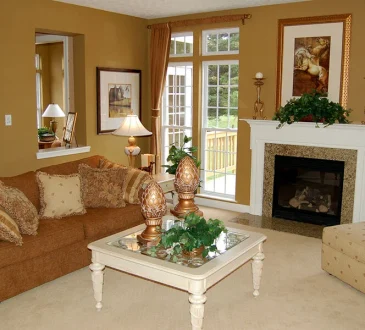
Fungi do not have to mean the destruction of your home or danger to your health. Provided that mildew and mold have not spread wide and far, homeowners can remove it from walls and baseboards by following the steps mentioned below. The wood used in baseboards usually soaks up and retains water, making an ideal mildew and mold environment.
If you are dealing with walls, baseboards, furniture, or trims that have been affected, this article will show homeowners and property managers how to remove move and mildew from the wood. First and foremost, people need to remember that speed is the key when it comes to good remediation.
Acting quickly will minimize the scope of the cleaning project, as well as making sure that the mildew and mold don’t compromise people’s health will allergic reactions in your family. As long as the spores have not spread an area more than ten square feet, people can take care of the issue without hiring a professional.
For more details about molds and mildew, click here for more details.
Step one: Wear proper protective gear
Mold and mildew are pretty dangerous. When you are ready to remove these spores from baseboards or walls, always protect yourself from inhaling any spores by wearing the proper protective gear. Eye goggles will keep spores from irritating your eyes. Experts also recommend wearing the right protective covering over your everyday clothes. It will prevent people from tracking spores that attach themselves to people’s clothes.
Take the necessary safety precautions to keep people safe. Wear safety goggles and rubber gloves; most importantly, wear an air mask to prevent spores from going into your lungs. If homeowners intend to use cleaning solutions that contain bleach and other chemicals, wear the proper protective outwear to safeguard your clothes against molds, chemicals, and stains.
Step two: Vacuum the entire area
Mold and mildew spores travel faster and spread through surfaces that they can attach to—these types of fungus travel through the air. Using a High-Efficiency Particulate Air filter vacuum on the baseboard and wall before starting the cleaning process will help remove any loose spores.
How does HEPA filter works? Check out https://www.explainthatstuff.com/hepafilters.html for more info.
Using a machine with a High-Efficiency Particulate Air filter, vacuum the infected area to remove loose spores along with other accumulated debris and dirt. Once finished, make sure to empty the vacuum canister or bag into a plastic container or receptacle outside the house. Make sure to seal the container tightly and adequately dispose of it.
Step three: Try water and soap
If the wall and baseboard you are dealing with are stained or painted, it means that the mold or mildew has not yet penetrated. People can therefore stick to standard or mild cleaning solutions like warm water with dishwashing detergent. Dip a scrub into the water with a cleaning detergent and gently go over the affected area.
If it is not clean enough, use vinegar with a little water. Using a spray bottle with water and vinegar solution, spray the mold and let the solution sit for at least one hour to make it work. Once the time has passed, wipe the wood using a clean and damp towel. Inspect the walls or baseboard for any remaining mildew, and if you do not see any, wipe the area with a clean and dry rag.
Cleaning baseboards or walls is a simple job if you know the basics of mold remediation and cleaning. If you do not have an idea to do it, the next best option is to hire a professional. Untreated wood used in baseboard and walls are porous and need a more potent chemical or solution to remove mold and mildew.
Step five: Sand the area
If fungus remains even after all the scrubbing, it is time to sand the area. An abrasive might not be the obvious option, and it can be counterintuitive, but using sandpaper to clean the affected area is the only way to clean hard-to-reach part of the wall or baseboard. Work the sandpaper around the area until you it is free of mold.
After sanding, it is a good idea to paint or refinish the wall or baseboard. It will make it look brand new and prevent future outbreaks. Finally, dispose of the rags and other materials that touch the fungus, and start figuring out how to limit that condensation, present in the infected area.
Visit this site for more details about wood finishing.
Remove the stains
After cleaning the spores’ surface, it is time to deep clean the mold from the infected surface. These stains do not pose health hazards but are not acceptable to look at. There are other options when it comes to removing these stains and spots without causing more fungus growth. Lightly sand the area once it is dry to remove the stain. But with darker wood, it can cause discoloration. New paint or varnish over a coat of fungi-killing primer can help hide these stain spots.
Cleaning untreated wood is a bit different
Use detergent, bleach, and water to scrub away the fungus. For untreated wood, use a brush, work the mixture into the surface, and let it dry for at least a couple of hours. If the infected area is prone to high humidity, it is imperative to use dehumidifiers or a regular fan to dry it quickly. Excess moisture or water will only increase fungus growth.




